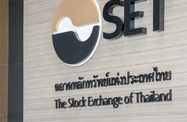Two of Thailand’s largest financial institutions have signed a non-binding memorandum of understanding (MoU) to undertake a merger following government efforts to encourage consolidation in the domestic banking industry.

In late February Thanachart Bank and TMB Bank – currently the sixth- and seventh-largest domestic banks by assets, with BT1trn ($31.5bn) and BT892bn ($28.1bn) at the end of last year, respectively – announced their plans to merge in a deal estimated to value between BT130bn ($4.1bn) and BT140bn ($4.4bn).
The consolidated entity, which is to be renamed, will have an asset base of BT1.9trn ($59.7bn) and some 10m retail customers.
TMB Bank, whose major shareholders include the Ministry of Finance (MoF), with 25.9%, and Dutch banking group ING, with 25%, has said it will finance the deal through debt and equity, announcing that it will issue new shares worth 70% of total debt.
The MoF will be required to raise capital to prevent share dilution, with action to be taken once a new government takes office following last month’s election.
“If the ministry does not retain its rights, we would cause an impairment. But if [the MoF] raises capital and the share price rises with it, we could sell some shares to reduce our stake in case foreign or institutional investors are interested in buying,” Apisak Tantivorawong, the minister of finance, told local media in March.
Meanwhile, Canada’s Bank of Nova Scotia – which holds a 49% stake in Thanachart Bank, in partnership with Thanachart Capital (51%) – is expected to downsize or offload its investment in the merged entity as it focuses on expanding its footprint in Latin America.
See also: The Report – Thailand 2018
Government encourages domestic mergers
The planned merger, which should help the new entity enhance deposits and lending capacity, as well as improve economies of scale, comes amid government efforts to encourage consolidation in the banking sector to boost operational efficiency and help local lenders compete more readily with regional rivals.
Furthermore, officials hope a stronger banking sector can help shift the country from a production-based economy to a service-based one under the auspices of the Thailand 4.0 development plan.
To this end, in April last year the Cabinet approved a variety of tax incentives and deductions for lenders that engage in mergers.
They include provisions exempting commercial banks that merge or transfer into another bank from corporate income tax, specific business tax, and stamp duties in relation to income and gross receipts. Meanwhile, the reforms provide incentives based on the size of the asset base, with merged banks holding more than BT4trn ($125.9bn) in assets eligible to receive a double deduction on the costs associated with the merger or transfer.
Such measures are crucial to encouraging Thai banks to merge and use their resulting size to compete strongly in the region. Under the 2015 ASEAN Banking Integration Framework, banks that meet certain criteria – resulting in the designation of Qualified ASEAN Banks – have greater access to other ASEAN markets.
Currently, Thailand’s top-five commercial banks have cumulative assets of approximately $425bn, less than other ASEAN economies of a similar size. The five-largest commercial banks in Malaysia and Singapore, for comparison, have combined assets of more than $500bn and $1trn, respectively.
No additional deals on the horizon
Despite the incentives and government support, industry figures are unsure if private shareholders in other large banks – such as Bangkok Bank, Siam Commercial Bank and Kasikornbank – will be persuaded to conduct mergers or acquisitions of their own.
Prasarn Trairatvorakul, the former governor of the Bank of Thailand, highlighted some challenges in encouraging tie-ups when speaking to OBG last year.
“Most Thai banks are privately run, so the issue for those banks lies in identifying the value of mergers and acquisitions,” he said. “There are talks of mergers involving the country’s big four banks; however, we observe a lot of overlap between them, so they would first need to address this to see the value of joining together. That being said, the medium-term outlook for mergers does not appear to be very positive.”


